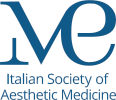Article
At the end of the 90s, precisely in 1997, SixDegrees, the first social platform, conceived by Andrew Weinreich, the creative mind of Macro View Communications, is launched online 1. This marks the beginning of a new chapter in the digital age, and of a new conception of the internet world, which has changed and impacted over the years the common way of thinking, acting and relating to others. The passive user-web relationship is outpaced by the birth of Web 2.0 world, laying the foundations for a virtual realm based on social relationships. Social media has been founded on this principle of uniting, sharing, and creating networks of communication among people who can share opinions and thoughts. Today, social media is an integral part of our thinking, part of our daily lives, opinions, and choices. In these years the intersection of social media and aesthetic medicine and surgery has given rise to a profound transformation in the way individuals perceive, pursue, and participate in beauty standards 2. The ubiquitous influence of social platforms has not only democratized access to information but has also shaped the very essence of aesthetic ideals. As we navigate this dynamic landscape, it becomes imperative to examine both the positive and negative impacts that social media exerts on the realm of aesthetics. Social media makes the user confident in self-information, making it possible to view, assess, explore various paths, and engage in discussions. The user has the opportunity to approach this world with curious eyes and an attentive mind, drawing information from professionals and making it their own. Real-life testimonials, before-and-after photos, and candid discussions have demystified these treatments, empowering individuals to make informed decisions about their own aesthetic journeys. The democratization of information, however, comes with its own set of challenges. Social media’s represented reality can create unrealistic beauty standards, fostering a culture of comparison. The quest for perfection, driven by the pursuit of “Instagrammable” aesthetics, may prompt individuals to undergo procedures they may not necessarily need, blurring the line between self-improvement and the relentless pursuit of an unattainable ideal. Furthermore, the rapid dissemination of information through social media can sometimes oversimplify complex medical procedures 3. Any medical procedure requires an understanding of individual needs and expectations and health considerations. What we then wonder is whether the choice of the professional, in front of a smartphone screen, is correct. Social media presents us with a thousand options and alternatives. However, a conscious choice cannot stop at the acclaim of photos of miraculous results or information extracted from captions under web posts or even from generalized statements by professionals that are copied and pasted onto one’s skin, forgetting the uniqueness of each individual and body. Despite aesthetic procedures are often considered a mere narcissistic whim, behind the trivial “little injection”, there is a medical procedure, which must respect the individuals’ well-being and health 4,5. The choice of the professional requires a thorough and detailed comparison, which must necessarily culminate in a meeting.
In October 2021 the English legislation enacts the “Botulinum Toxin and Cosmetic Fillers Children Act 2021”, a law expressing the prohibition of injecting botulinum or hyaluronic acid for aesthetic purposes in those under 18. Furthermore, in March 2023, French legislation announces the proposed law prohibiting influencers from endorsing aesthetic medicine and plastic surgery in commercial partnerships with brands.
So, what happened, where is the mistake? The ease of access to information and the trivialization of clinical practice have left tangled traces in their path. Granted that social media is now an integrated means in our society, the doctor has the task of adopting a communication that suits a social audience, which include individuals of different gender, age, and cultural backgrounds. Social communication in the healthcare field should aim to guide and accompany the user in their choice, tailored to their needs and individualized, avoiding approaching the social profiles of the Plastic Surgeon or Aesthetic Doctor as if it were a catalog of aesthetic products. The commercialization and marketing of aesthetic procedures inevitably results in an “avalanche” phenomenon, has explained by Dr. Phillippa Diedrichs, a Research Psychologist at the Centre of Appearance Research at the University of West England, in a study involving a sample of 112 women 6. The study aimed to assess the perception of their body image after navigating social media, concluding that the constant comparison we are subjected to using social media leads to a negative perception of one’s body image and low self-esteem.
In conclusion, the impact of social media on aesthetic medicine is a double-edged sword. While it has undoubtedly expanded access to information, destigmatized cosmetic procedures, and fostered community support, it has also given rise to a culture of unrealistic beauty standards and hasty decision-making. Striking a balance between empowerment and responsibility is crucial as we continue to navigate the transformative waves of social media’s influence on the evolving landscape of aesthetic medicine and aesthetic surgery and reconstructive field 7-11. It is imperative for individuals to approach aesthetic enhancements with a discerning eye, seeking qualified professionals and embracing a holistic perspective that values both inner well-being and outer beauty.






 PDF
PDF
